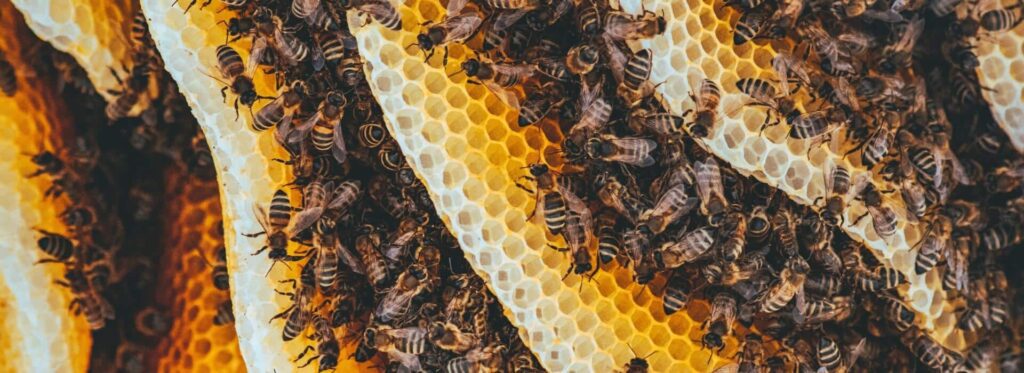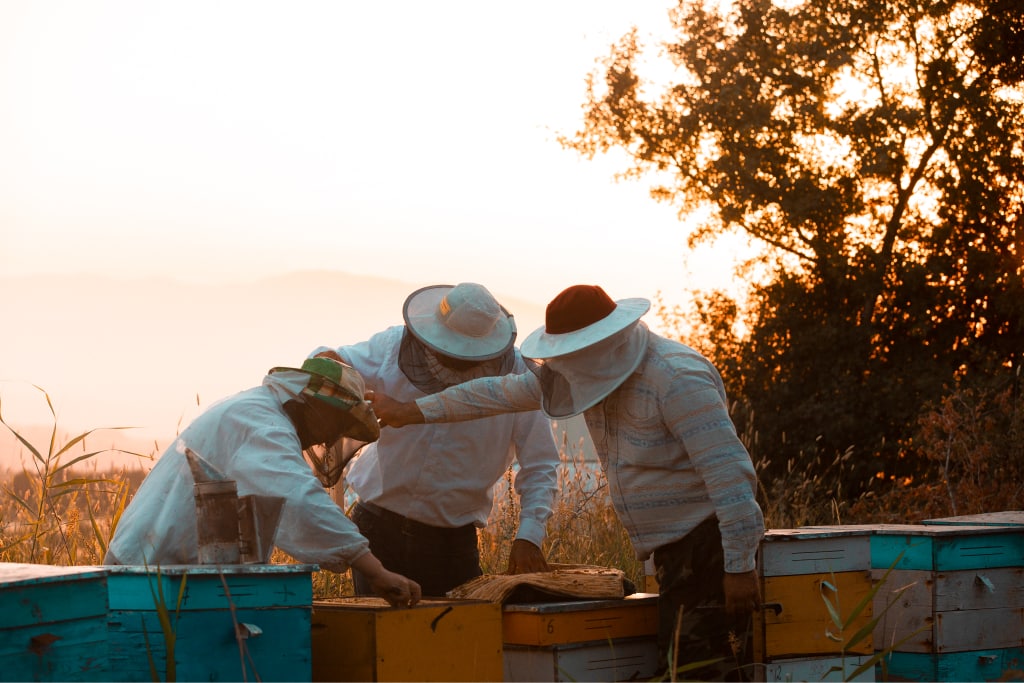Honey bees, those small, industrious insects buzzing around our gardens and fields, are far more than just honey producers. They are a testament to the wonders of nature and play a crucial role in our ecosystem as pollinators. In this blog post, we will explore some of the remarkable traits that make honey bees such fascinating creatures.
- Social Structure
Honey bees are known for their highly organized and efficient social structure. They live in colonies, each with a single queen bee, worker bees, and male bees called drones. The division of labor within the colony is a remarkable example of cooperation and specialization. Queen bees lay eggs, worker bees perform various tasks such as foraging, nursing, and defending the hive, while drones exist primarily for mating purposes.
- Communication through Dance
One of the most intriguing traits of honey bees is their ability to communicate complex information to other members of the colony through a dance known as the “waggle dance.” When a forager bee finds a rich source of nectar or pollen, it returns to the hive and performs a dance that conveys the location and quality of the food source to other bees. This remarkable form of communication helps the colony efficiently exploit resources.
- Efficient Pollinators
Honey bees are vital pollinators for a wide variety of flowering plants, including many of the crops that make up a significant portion of our diets, such as fruits, vegetables, and nuts. Their efficiency as pollinators arises from their adherence to a specific flower species during a foraging trip, which increases the chances of cross-pollination.
- Impressive Navigation Skills
Honey bees possess an incredible ability to navigate over long distances. They use a combination of visual cues, the sun’s position, and the Earth’s magnetic field to locate food sources and return to the hive with remarkable precision. This navigation prowess enables honey bees to forage over large areas and contributes to their success as pollinators.
- Hive Temperature Control
Maintaining the right temperature within the hive is crucial for honey bee survival. Honey bees exhibit an impressive trait known as “thermoregulation.” They use their wings to fan or generate heat within the hive, ensuring that the temperature remains optimal for brood development and honey storage, regardless of external conditions.
- Wax Production
Honey bees are expert wax producers. They produce wax from specialized glands on their abdomen and then use it to build the honeycomb structure within the hive. The comb serves as a storage facility for honey, pollen, and a place for the queen bee to lay eggs. Beeswax also has numerous human applications, from candles to cosmetics.
- Sting Defense
While nobody enjoys a bee sting, honey bee stings are designed for defense rather than aggression. When a honey bee stings, it leaves behind a barbed stinger and a venom sac. The act of stinging often results in the bee’s death, as it tears away from the bee’s body. This sting mechanism is a last resort for defending the hive and is rarely used.
Honey bees are remarkable creatures with a range of fascinating traits that have captivated scientists and nature enthusiasts for centuries. From their complex social structure to their extraordinary communication skills and essential role in pollination, honey bees are a testament to the intricacies of the natural world. It’s crucial to appreciate and protect these incredible insects, as they are not only responsible for producing the delicious honey we enjoy but also play a vital role in maintaining the biodiversity of our planet.


